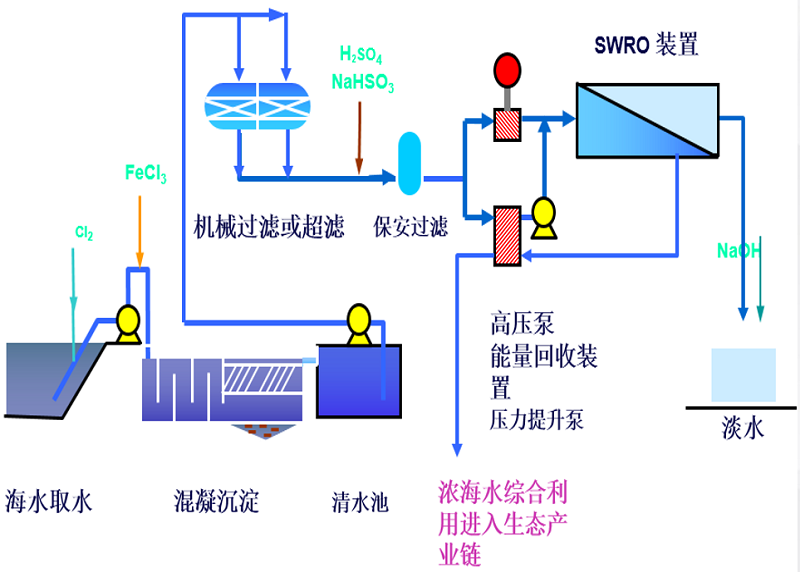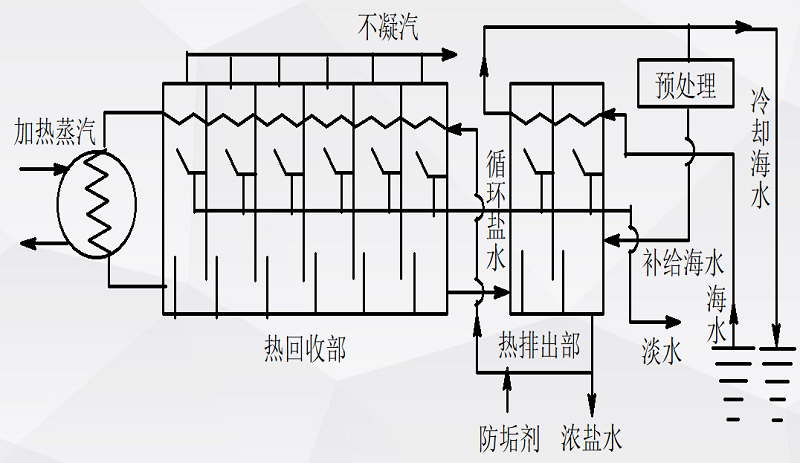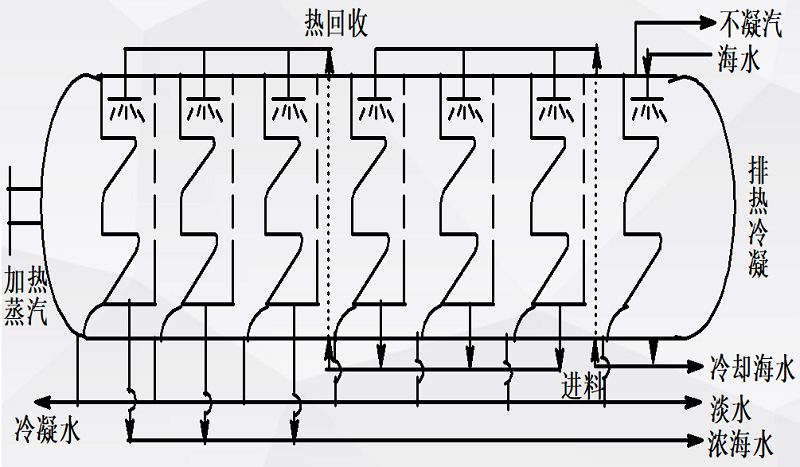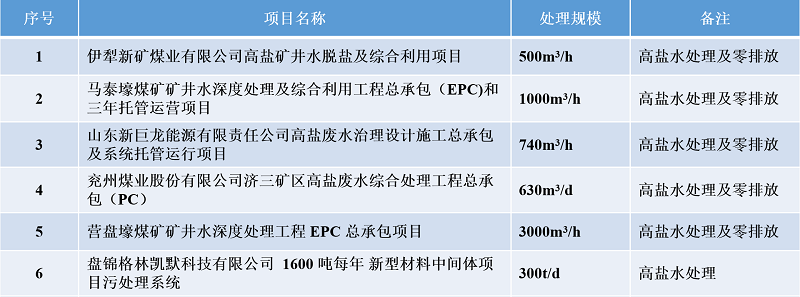Company Profile
Main business areas: industrial field, municipal field, new energy materials
Professional provision of advanced environmental protection technology equipment, system integration, and overall solutions to environmental issues, including research and development design, equipment integration, engineering contracting, facility operation, etc
The first ecological protection and environmental governance industry science and technology innovation board listed enterprise in China. Stock abbreviation: Wandes, stock code: 688178
Desalination Technology
Reverse osmosis method
The reverse osmosis method uses a semi permeable membrane. Due to the existence of osmotic pressure, fresh water will permeate to the seawater side through the semi permeable membrane. When an external force exceeding the osmotic pressure of seawater is applied on the seawater side, the pure water in seawater will reverse penetrate from the concentrated water side to the fresh water side to obtain fresh water.
Advantages: Efficient removal of over 90% soluble salts and over 99% colloidal microorganisms and organic matter from seawater, which can alleviate the problem of daily production water and is very economical.
Disadvantages: The device limitations of reverse osmosis membranes do not have an advantage in large-scale seawater treatment; The reverse osmosis membrane has a short lifespan and high replacement cost.

Multi stage flash evaporation method (MSF)
A certain amount of seawater is introduced into the multi-stage flash evaporation system, and then it is heated and heated, with the water source preheated to the set water temperature. If the pressure in the flash chamber is less than the saturated vapor pressure corresponding to the set water temperature, the hot seawater enters the flash chamber and quickly evaporates and vaporizes, causing a rapid decrease in temperature. At the same time, the steam cools and condenses into water, thereby obtaining fresh water.
Process characteristics: The equipment is simple and practical, with less scale and greater operational flexibility, making it suitable for large and super large seawater desalination enterprises.

Low temperature multi potency method (LT-MED)
Low temperature multi effect method is used for seawater desalination under conditions where the maximum evaporation water temperature is less than 70 ℃. A large number of horizontal tube falling film evaporators are connected and divided into multiple groups, and a certain amount of water vapor is then sent into the evaporator. After multiple evaporation and cooling, condensation is achieved, resulting in a corresponding amount of distilled water.
Advantages: Low operating temperature, which can fully utilize the low-temperature waste heat from power plants and chemical plants. Low grade steam from 50 ℃ to 70 ℃ can be used as an ideal heat source, greatly reducing the impact of extracting back pressure steam on power generation in power plants, and also slowing down equipment corrosion and scaling; High thermal efficiency, low power consumption, and high operational flexibility.
Disadvantages: The evaporation temperature of saline water cannot exceed 70 ℃, which restricts further improvement of thermal efficiency; During low-temperature operation, the steam specific volume is relatively large, resulting in a larger equipment volume and increased equipment investment.

Case show




